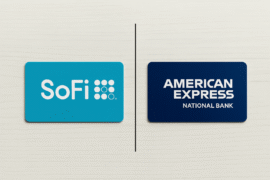This article may contain references to products or services from one or more of our advertisers or partners. We may receive compensation when you click on links to those products or services. Nonetheless, our opinions are our own.
Managing student debt can be a demanding financial responsibility, especially for borrowers who are still building their credit history or navigating limited income streams. For those seeking to lower monthly payments or secure better loan terms, refinancing with the support of a cosigner can be a viable solution. However, this option comes with financial implications that necessitate a thoughtful and informed approach. This resource outlines how cosigners influence student loan refinancing outcomes, what lenders evaluate during the application process, and the long-term considerations for both borrowers and their cosigners.
- What Is Student Loan Refinancing?
- The Role of a Cosigner in Loan Refinancing
- Important Risks and Considerations
- Who Makes a Strong Cosigner?
- How the Refinancing Process Works
- Future Options: Releasing a Cosigner
- Maintaining Financial Responsibility Post-Refinancing
- Frequently Asked Questions
- Final Thoughts
- Recommended Reads
What Is Student Loan Refinancing?
Student loan refinancing involves replacing one or more existing loans with a new loan issued by a private lender. The borrower aims to qualify for a lower interest rate, a different repayment term, or a simplified payment structure by consolidating their loans into a single monthly obligation. While refinancing can be financially advantageous, qualification requirements, such as high credit scores, steady income, and a low debt-to-income ratio, can be barriers for many borrowers. In such cases, a cosigner may play an essential role in meeting lender expectations.
The Role of a Cosigner in Loan Refinancing
A cosigner is a creditworthy individual who agrees to share equal responsibility for repaying a loan. The lender assesses the borrower’s financial profile alongside their own during the application process, providing additional assurance. This added layer of security often translates into more favorable loan conditions for the borrower.
Why Lenders Consider Cosigners
Lenders evaluate risk before approving or pricing a loan. A borrower with limited credit history, low income, or unstable employment may not meet the criteria to qualify for competitive refinancing offers on their own. A cosigner can offset these concerns by demonstrating strong creditworthiness and financial reliability.
Advantages of Including a Cosigner
Partnering with a cosigner can improve both the likelihood of approval and the quality of the refinancing offer. Some of the benefits may include:
- Reduced Interest Rates: Borrowers may secure a significantly lower rate when backed by a cosigner with excellent credit, potentially saving thousands over the life of the loan.
- Access to Better Terms: Improved credit strength enables borrowers to access more extended repayment periods or more flexible terms.
- Higher Approval Rates: Cosigners help mitigate lender risk, which can increase the odds of loan approval for borrowers who may not qualify independently.
Important Risks and Considerations
While a cosigner offers clear benefits, there are notable obligations and risks for both parties.
Cosigners become legally responsible for loan repayment if the borrower defaults on the loan. This means that any missed or late payments can negatively impact the cosigner’s credit history and financial standing.
Impact on Cosigner’s Financial Profile
Even if the borrower makes all payments on time, the loan still appears on the cosigner’s credit report. This added liability can impact the cosigner’s ability to qualify for other forms of credit, such as mortgages and car loans.
Relationship Strain
When financial obligations are shared, it can introduce pressure into personal relationships. Both parties need to maintain open communication and agree on responsibilities before proceeding with a joint application.
Who Makes a Strong Cosigner?
Not everyone is suitable for cosigning. Lenders typically look for:
| Criteria | Details |
|---|---|
| Credit Score | Generally 700 or higher |
| Income Level | Stable and sufficient to cover obligations |
| Debt-to-Income Ratio | Low enough to accommodate new liability |
| Financial History | Clean record with no recent defaults |
Prospective cosigners should review their credit reports and financial obligations before committing.
How the Refinancing Process Works
Borrowers planning to apply for refinancing with a cosigner should follow a structured approach to improve their chances of securing favorable terms:
- Evaluate Current Loans: Gather loan details, including interest rates, remaining balance, and repayment terms.
- Have a Clear Discussion: Set expectations with the cosigner regarding financial obligations and communication.
- Research Multiple Lenders: Compare offers from reputable refinancing lenders that support cosigned applications.
- Prepare Financial Documents: Be ready to provide proof of income, tax returns, and credit information for both parties.
- Submit a Complete Application: Accuracy in documentation improves the efficiency of approval.
- Review Loan Offers: Examine interest rates, repayment terms, and any applicable fees before selecting a lender.
- Finalize and Begin Repayment: Once accepted, ensure that payments are made promptly and consistently.
Future Options: Releasing a Cosigner
Many borrowers eventually seek to release their cosigner from the loan agreement. While not all lenders provide this option, some allow for cosigner release after a certain number of consecutive, on-time payments and a demonstrated ability to manage the loan independently. Borrowers considering cosigner release should monitor the following:
- Improvement in personal credit score
- Evidence of consistent repayment history
- Proof of stable income and low debt levels
Maintaining Financial Responsibility Post-Refinancing
After refinancing, financial discipline remains critical. Borrowers should:
- Automate Payments: Reduces the risk of late fees and credit damage
- Communicate Regularly: Stay in contact with the cosigner about the loan status
- Track Credit Reports: Ensure payments are being recorded accurately
- Reassess Financial Goals: Consider additional opportunities for debt reduction or savings
Frequently Asked Questions
How does a cosigner help with student loan refinancing?
A cosigner enhances the borrower’s application by providing additional credit strength, which often results in better interest rates and a higher chance of approval.
What risks does the cosigner assume?
Cosigners share full legal responsibility for the loan. If the borrower fails to repay, the cosigner’s credit can suffer, and they may be required to cover the balance.
Are all lenders willing to remove a cosigner later?
No. Cosigner release policies vary by lender. Some require a specific number of consecutive, on-time payments, as well as evidence of the borrower’s financial independence.
Can refinancing be done without a cosigner?
Yes, if the borrower meets the lender’s credit and income criteria independently. Otherwise, a cosigner may be necessary to access refinancing options.
How can I compare lenders that accept cosigners?
Look for lenders that specialize in student loan refinancing. Many offer rate calculators and allow prequalification without affecting credit scores.
Final Thoughts

Student loan refinancing with a cosigner can open the door to more affordable payments and reduced interest expenses, especially for those without a long credit history or high income. However, shared responsibility introduces legal and financial consequences that both parties must fully understand. Careful planning, honest communication, and responsible repayment are essential to protect the economic well-being of everyone involved.

Reviewed and edited by Albert Fang.
See a typo or want to suggest an edit/revision to the content? Use the contact us form to provide feedback.
At FangWallet, we value editorial integrity and open collaboration in curating quality content for readers to enjoy. Much appreciated for the assist.
Did you like our article and find it insightful? We encourage sharing the article link with family and friends to benefit as well - better yet, sharing on social media. Thank you for the support! 🍉
Article Title: Student Loan Refinancing with a Cosigner: What Borrowers Should Know
https://fangwallet.com/2025/06/12/student-loan-refinancing-2/The FangWallet Promise
FangWallet is an editorially independent resource - founded on breaking down challenging financial concepts for anyone to understand since 2014. While we adhere to editorial integrity, note that this post may contain references to products from our partners.
The FangWallet promise is always to have your best interest in mind and be transparent and honest about the financial picture.
Become an Insider

Subscribe to get a free daily budget planner printable to help get your money on track!
Make passive money the right way. No spam.
Editorial Disclaimer: The editorial content on this page is not provided by any of the companies mentioned. The opinions expressed here are the author's alone.
The content of this website is for informational purposes only and does not represent investment advice, or an offer or solicitation to buy or sell any security, investment, or product. Investors are encouraged to do their own due diligence, and, if necessary, consult professional advising before making any investment decisions. Investing involves a high degree of risk, and financial losses may occur including the potential loss of principal.
Source Citation References:
+ Inspo
There are no additional citations or references to note for this article at this time.












































